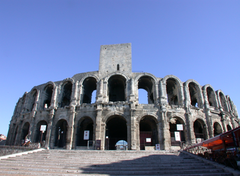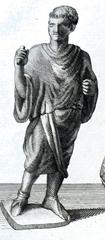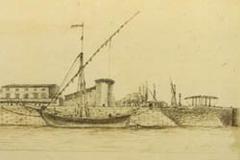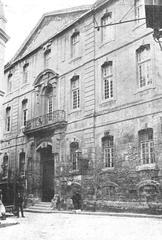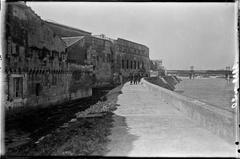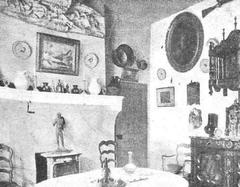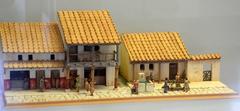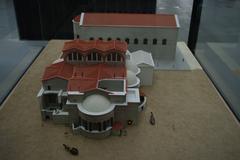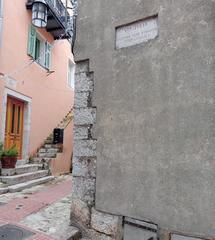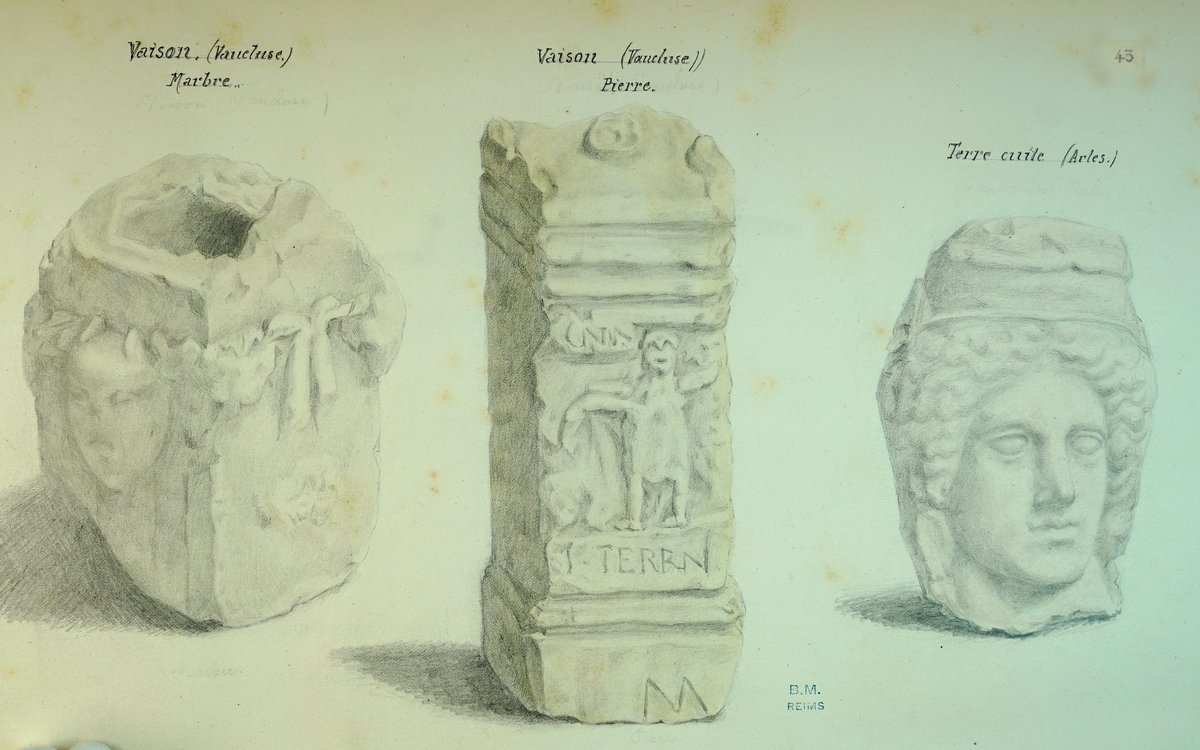
Arelate Arles France Visiting Hours, Tickets, and Historical Sites Guide
Date: 15/06/2025
Introduction
Arles, once known as Arelate, is a captivating city in Provence, France, renowned for its extraordinary Roman monuments, medieval treasures, and vibrant cultural festivals. With roots stretching back to the 6th century BCE, Arles has evolved from a Ligurian settlement to a flourishing Roman provincial capital, a medieval spiritual hub, and a modern center for the arts. Today, visitors can explore a city where history, art, and Provençal tradition are woven into every street and square.
This detailed guide covers everything you need to plan your visit—from historical background and cultural significance to practical information on ticketing, visiting hours, accessibility, and local tips. Whether you’re fascinated by ancient ruins, inspired by Van Gogh, or eager to experience unique festivals, Arles promises an unforgettable journey through time.
Table of Contents
- Introduction
- Historical Background
- Early Foundations and Pre-Roman Origins
- Roman Conquest and Urban Expansion
- The Roman Golden Age: Urban Development and Monumental Architecture
- Late Antiquity and Early Christian Influence
- Medieval Transformations and Romanesque Revival
- Modern Rediscovery and Artistic Legacy
- Preservation, UNESCO Status, and Contemporary Significance
- Practical Visitor Information
- Frequently Asked Questions (FAQ)
- Conclusion
- References
Historical Background
Early Foundations and Pre-Roman Origins
Arles began as a Ligurian settlement called Theline in the 6th century BCE, strategically sited on the Rhône delta near the Camargue marshes. Its name, “Arelate,” derives from a Celtic term meaning “surrounded by swamps,” reflecting its geography (Nomads Travel Guide; Marvellous Provence). This location made it a hub for trade and cultural exchange, especially with the Greek city of Massilia (modern Marseille).
Roman Conquest and Urban Expansion
The Romans conquered Arles in 123 BCE and later elevated its status in 46 BCE after Julius Caesar rewarded the city for its loyalty during the civil war, granting it the title “Colonia Julia Paterna Arelatensium Sextanorum” (France This Way). This ushered in a period of significant urban growth and monumental building projects.
The Roman Golden Age: Urban Development and Monumental Architecture
By the 1st century BCE through the 4th century CE, Arles flourished as a major city in Roman Gaul, with a population exceeding 30,000 (The Crazy Tourist). Its location on the Via Domitia and the Rhône River fueled its prosperity (Cultured Voyages).
Major Roman Monuments
- Amphitheatre (Arènes d’Arles): Built in 90 CE, this arena could seat over 20,000 spectators for gladiatorial games and public spectacles. Today, it hosts concerts and traditional Provençal bull games (The Archaeologist).
- Roman Theatre: Dating from the late 1st century BCE, it once held 10,000 spectators. Its standing columns and orchestra offer insight into Roman entertainment (France This Way).
- Cryptoporticoes: These underground galleries supported the Roman forum and served as storerooms (World Heritage Site).
- Thermae of Constantine: Early 4th-century public baths exemplifying Roman luxury (Wanderlog).
- Alyscamps Necropolis: One of the most famous ancient cemeteries, used from Roman times through the Middle Ages (World Heritage Site).
Late Antiquity and Early Christian Influence
In the 4th and 5th centuries, Arles became a major administrative and religious center, hosting church councils and serving as seat of the Praetorian Prefecture of Gaul. The bishopric established by St. Trophime was instrumental in spreading Christianity, with the Church of St. Trophime later becoming a UNESCO-listed Romanesque marvel (France This Way).
Medieval Transformations and Romanesque Revival
After the fall of Rome, Arles endured Visigothic, Muslim, and Burgundian rule, eventually becoming the capital of the Kingdom of Arles in the 10th century (Cultured Voyages). Many Roman buildings were repurposed, such as the amphitheatre, which became a fortress and residential enclave. The Romanesque period produced landmarks like the Church and Cloister of St. Trophime, attracting pilgrims along the Camino de Santiago (World Heritage Site).
Modern Rediscovery and Artistic Legacy
The late 19th century saw Vincent van Gogh create over 300 works in Arles, inspired by the city’s luminous light and historic sites (History Tools). His legacy endures at sites like the Espace Van Gogh and throughout the city’s cultural life.
Preservation, UNESCO Status, and Contemporary Significance
Arles’ Roman and Romanesque monuments were inscribed as a UNESCO World Heritage Site in 1981 (UNESCO World Heritage Site). Preservation efforts have maintained these structures as venues for festivals, reenactments, and contemporary art (Marvellous Provence). The Musée départemental Arles antique and Musée Réattu house significant collections, while annual events like Festival Arelate—Les Journées Romaines celebrate the city’s living history (JDS Arles).
Practical Visitor Information
Visiting Hours and Tickets
- Amphitheatre (Arènes d’Arles): Open daily, typically from 9:00 or 9:30 AM to 6:00 or 7:30 PM (hours vary by season and event). Tickets: ~€10 adults, with discounts for children and seniors.
- Roman Theatre: Similar hours, admission often included in combination tickets or the Arles Pass.
- Cryptoporticoes, Thermes de Constantin, Alyscamps: Generally open 9:00 AM–6:00 PM; some offer free or included entry with the Arles Pass.
- Saint-Trophime Church and Cloister: Church open 9:00 AM–7:00 PM; cloister 9:00 AM–12:00 PM and 2:00 PM–6:00 PM. Entry: ~€7 for the cloister.
- Museums (e.g., Musée Réattu, Musée départemental Arles antique): Mostly open 10:00 AM–6:00 PM, closed certain days (often Mondays or Tuesdays). Tickets: €7–€9, with discounts and combination options.
Tickets can be purchased at site entrances, the tourist office, or online via the official Arles tourism website. The Arles Pass offers combined access to multiple monuments and museums at a discounted rate.
Guided Tours and Accessibility
- Guided Tours: Available in multiple languages and recommended for deeper historical context. Book in advance, especially during festival periods.
- Accessibility: Many sites are wheelchair accessible, though some ancient monuments have limited access due to steps or uneven surfaces. Newer attractions (like LUMA Arles) are fully accessible—check specifics before visiting.
Travel Tips and Nearby Attractions
- Best Time to Visit: Spring (April–June) and autumn (September–October) offer pleasant weather and fewer crowds.
- Getting Around: The historic center is walkable; bicycles are available for rent. Regional trains and buses connect Arles to Avignon, Nîmes, and the Camargue (Dreamer at Heart; Arles Guide).
- Nearby Excursions: Camargue Regional Nature Park (wild horses, flamingos), Avignon, Les Baux-de-Provence, and Saintes-Maries-de-la-Mer.
- Dining: Sample Provençal cuisine at local markets and traditional bistros. Saturday markets are a highlight for food and crafts.
Festivals and Cultural Life
- Rencontres d’Arles (July–October): Leading international photography festival. Tickets required for exhibitions; book ahead (Rencontres d’Arles).
- Arelate Roman Festival (August): Features reenactments, gladiator games, and themed workshops (Festival Arelate).
- Feria d’Arles: Annual spring and autumn event blending bullfights, parades, and Provençal music.
- Ongoing Events: Concerts, art exhibitions, and Provençal celebrations throughout the year (Arles Guide).
Museums and Artistic Attractions
- Musée de l’Arles et de la Provence antiques: Archaeology and Roman relics, including sarcophagi and mosaics.
- Musée Réattu: Fine arts, Picasso sketches, and a significant photography collection.
- Espace Van Gogh: Cultural center in the former hospital where Van Gogh was treated.
- LUMA Arles: Contemporary arts center with striking architecture and rotating exhibitions.
Accommodation and Essentials
- Stay in the Historic Center for proximity to major sites. Book early during festivals.
- La Roquette offers a quieter, charming atmosphere by the river.
- Transport: Arles is accessible by train, car, and regional bus. Parking is available but fills quickly during busy periods (Le Long Weekend).
Frequently Asked Questions (FAQ)
Q: What are the main visiting hours for Roman and medieval sites?
A: Most are open from 9:00 AM to 6:00 PM, with extended hours in summer. Always check official sites for the latest hours.
Q: Can I buy combined tickets?
A: Yes. The Arles Pass covers multiple monuments and museums at a reduced rate.
Q: Are guided tours available in English?
A: Yes, many tours are offered in English and other languages.
Q: Is Arles accessible for visitors with reduced mobility?
A: Some sites are accessible, but many ancient monuments have uneven terrain. Check accessibility details for each site before visiting.
Q: When is the best time to visit?
A: Spring and early autumn offer the best balance of pleasant weather and manageable crowds.
Q: Are there family-friendly activities?
A: Yes. Many monuments and museums are suitable for children, and festivals often include family events.
Conclusion
Arles is a living tapestry of history, art, and Provençal culture. From the monumental amphitheater echoing with the past, to the lively markets and world-class festivals, every visit offers new discoveries. Plan ahead by checking visiting hours, securing tickets, and exploring guided tours to ensure a rewarding experience. Don’t forget to enjoy the local cuisine, explore nearby natural wonders, and immerse yourself in the city’s artistic spirit.
Ready to embark on your journey? Download the Audiala app for up-to-date schedules, audio guides, and insider travel tips. For more inspiration, follow us on social media and browse our related articles on Provence’s top destinations.
Visual Recommendations
Include high-quality images of:
- The Arènes d’Arles at sunset (alt: “Arènes d’Arles Roman Amphitheater at sunset”)
- Roman Theatre ruins (alt: “Roman Theater Arles tickets”)
- Van Gogh walking trail and Espace Van Gogh
- Montmajour Abbey panoramic view
Embed an interactive map of Arles’ historical sites and transportation hubs for enhanced user experience.
Internal Links Suggestions
- “Top Things to Do in Provence”
- “Guide to French Festivals in Summer”
- “Exploring the Camargue Regional Nature Park”
- “Best Cycling Routes in Southern France”
References
- Discovering Arles: Visiting Hours, Tickets, and Historical Sites of a Roman Jewel, 2025, Nomads Travel Guide (Nomads Travel Guide)
- Marvellous Provence, 2025, Roman Sites of Arles (Marvellous Provence)
- France This Way, 2025, Roman Arles (France This Way)
- The Crazy Tourist, 2025, Best Things to Do in Arles (The Crazy Tourist)
- Cultured Voyages, 2025, Best Things to Do in Arles (Cultured Voyages)
- The Archaeologist, 2025, The Roman Amphitheater of Arles (The Archaeologist)
- World Heritage Site, 2025, Arles Listing (World Heritage Site)
- Wanderlog, 2025, Most Historic Buildings and Sites in Arles (Wanderlog)
- History Tools, 2025, Arles Amphitheatre (History Tools)
- JDS Arles, 2025, Festival Arelate—Les Journées Romaines (JDS Arles)
- UNESCO World Heritage Site, 1981, Arles (UNESCO World Heritage Site)
- Official Arles Tourism Website, 2025 (Official Arles Tourism Website)
- Dreamer at Heart, 2025, Things to Do in Arles (Dreamer at Heart)
- Arles Guide, 2025 (Arles Guide)
- Le Long Weekend, 2025, Arles France (Le Long Weekend)
- Rencontres d’Arles, 2025 (Rencontres d’Arles)
- Festival Arelate, 2025 (Festival Arelate)

